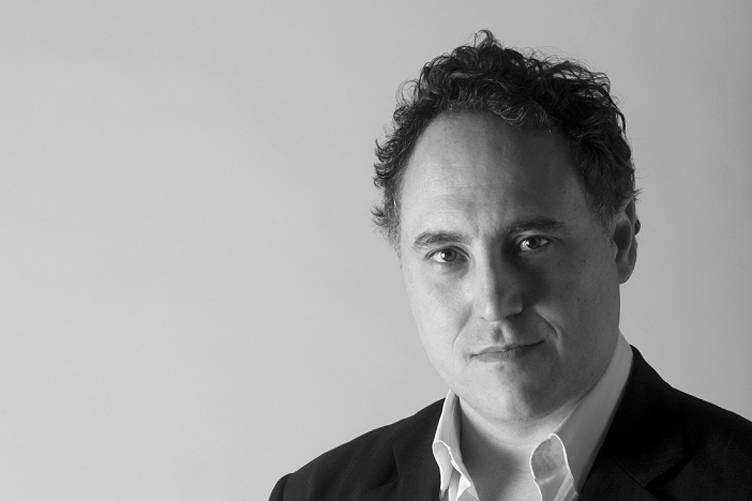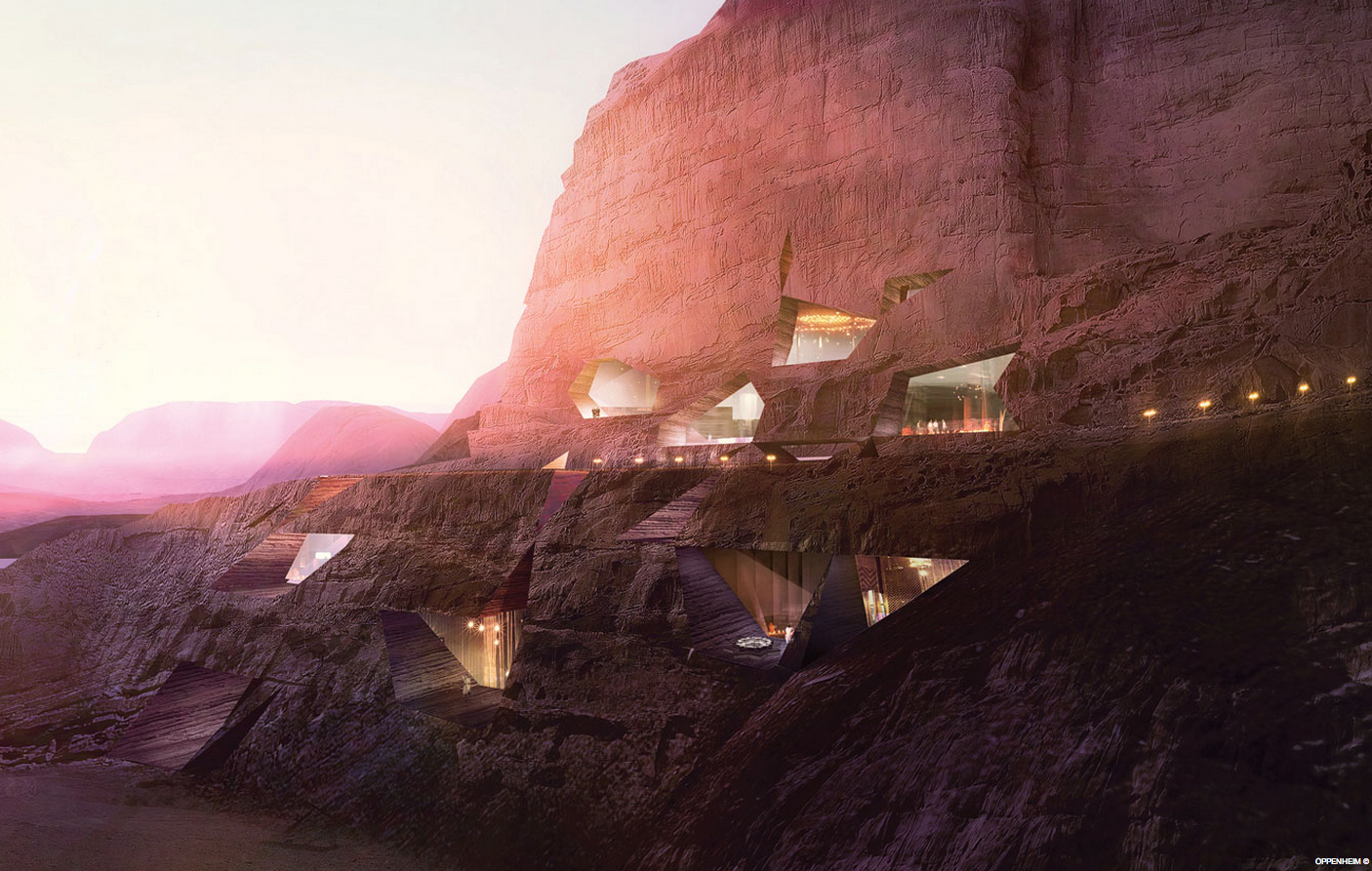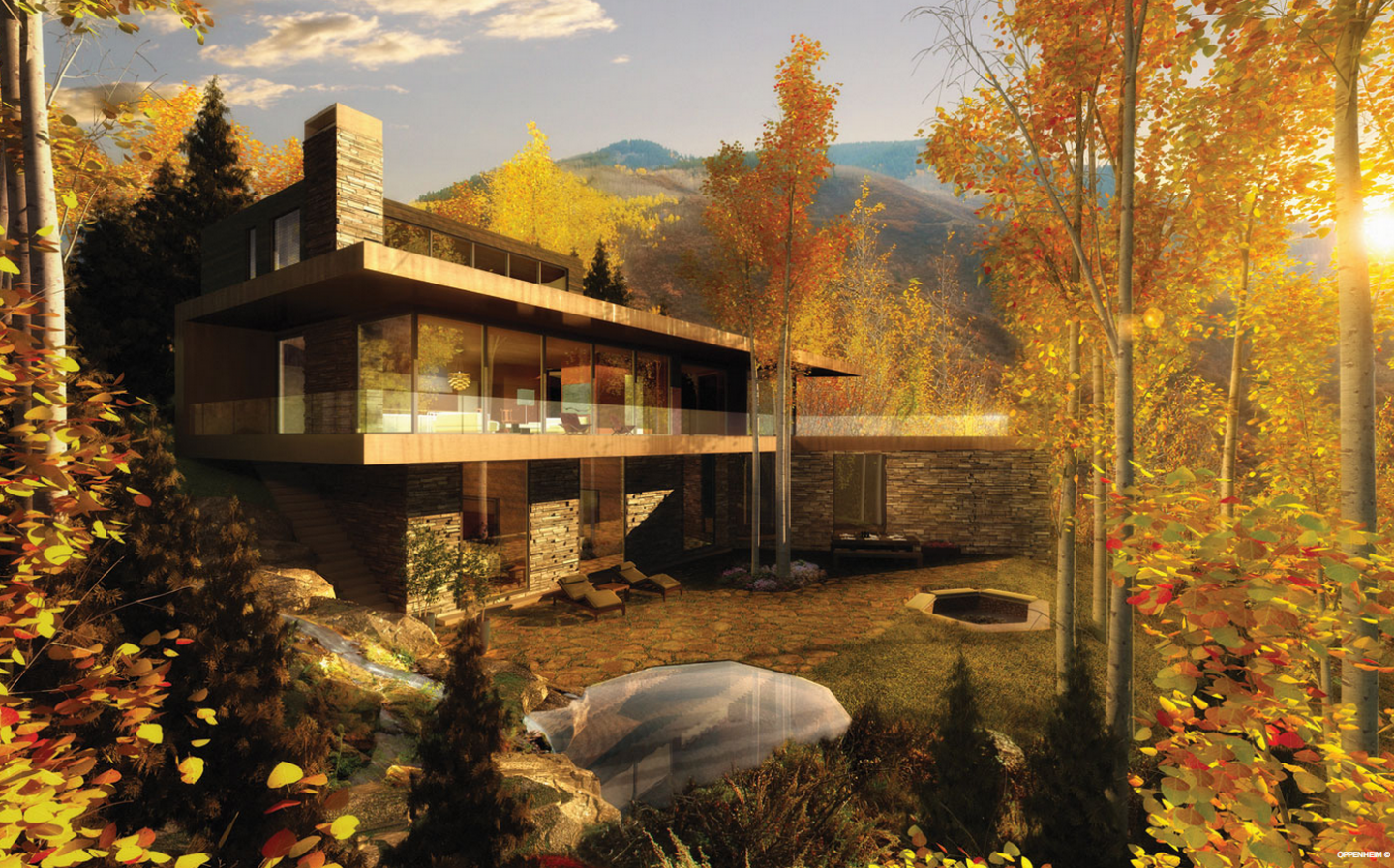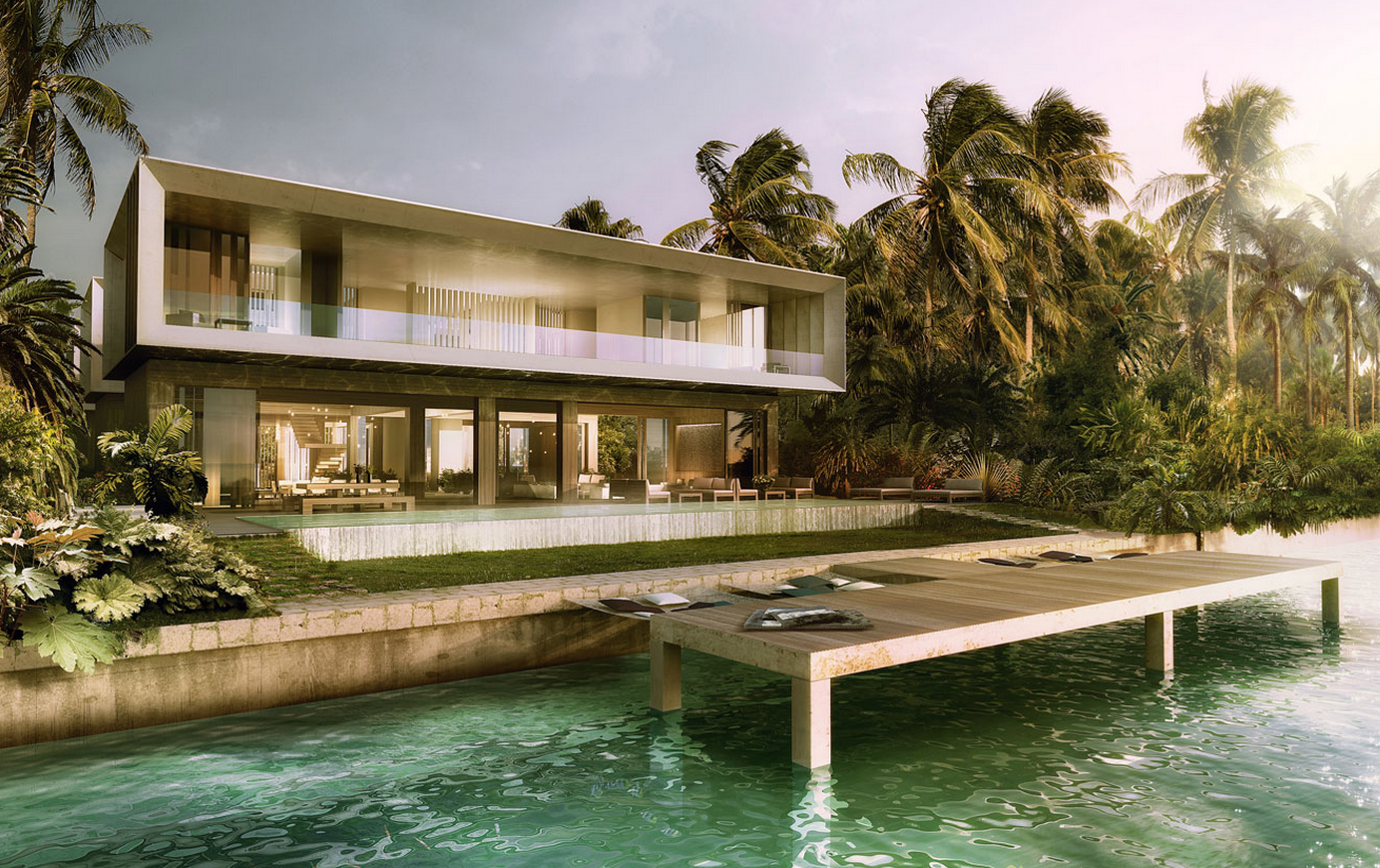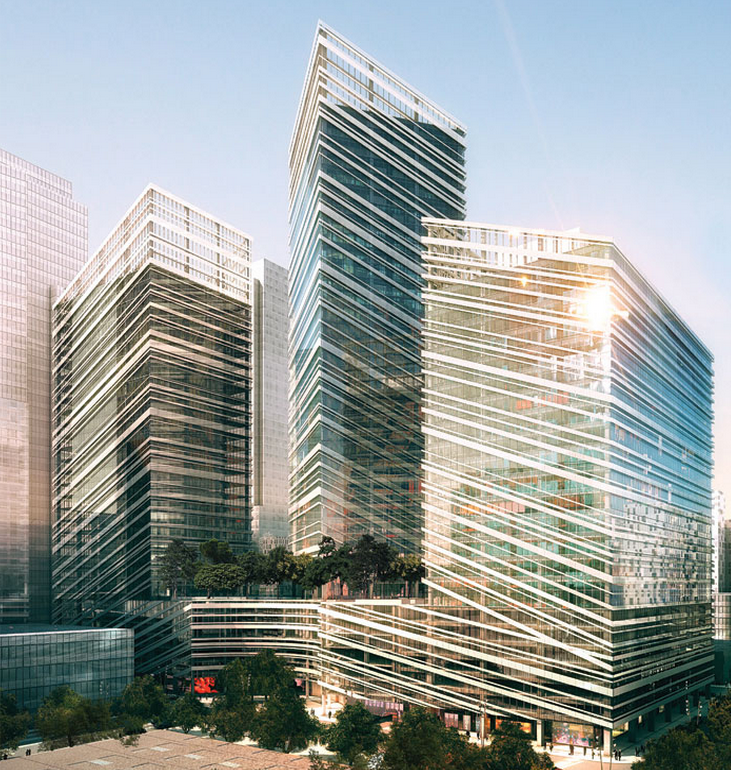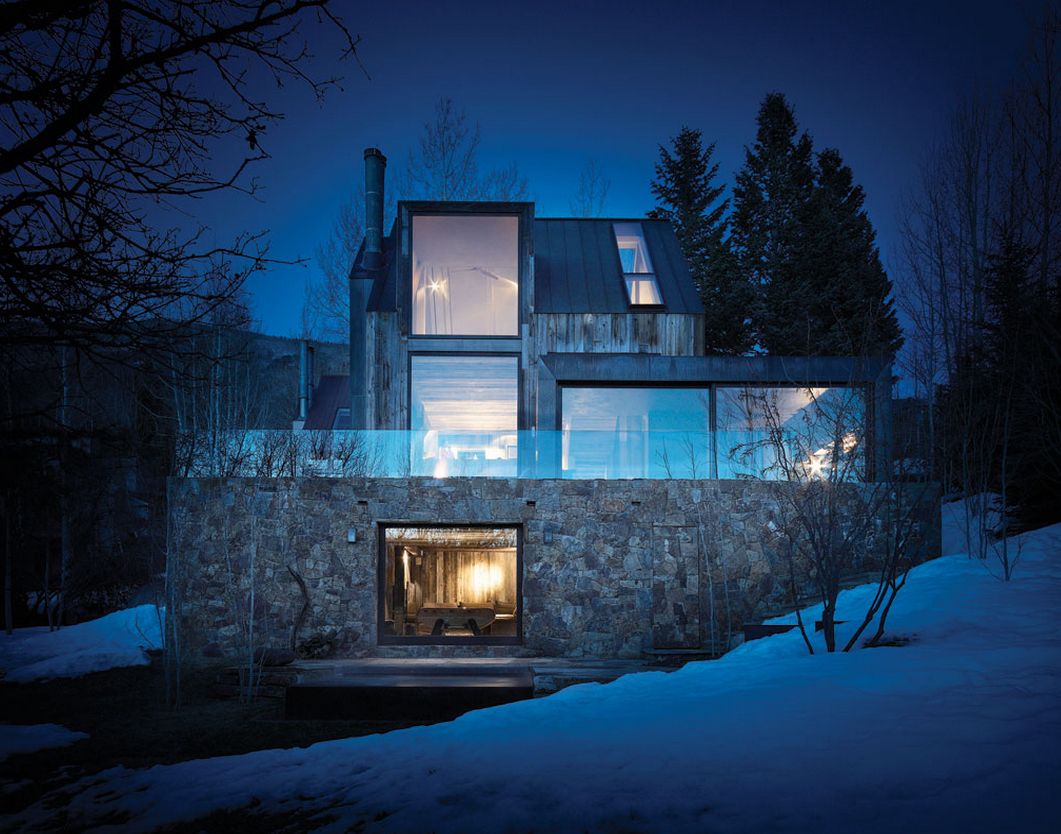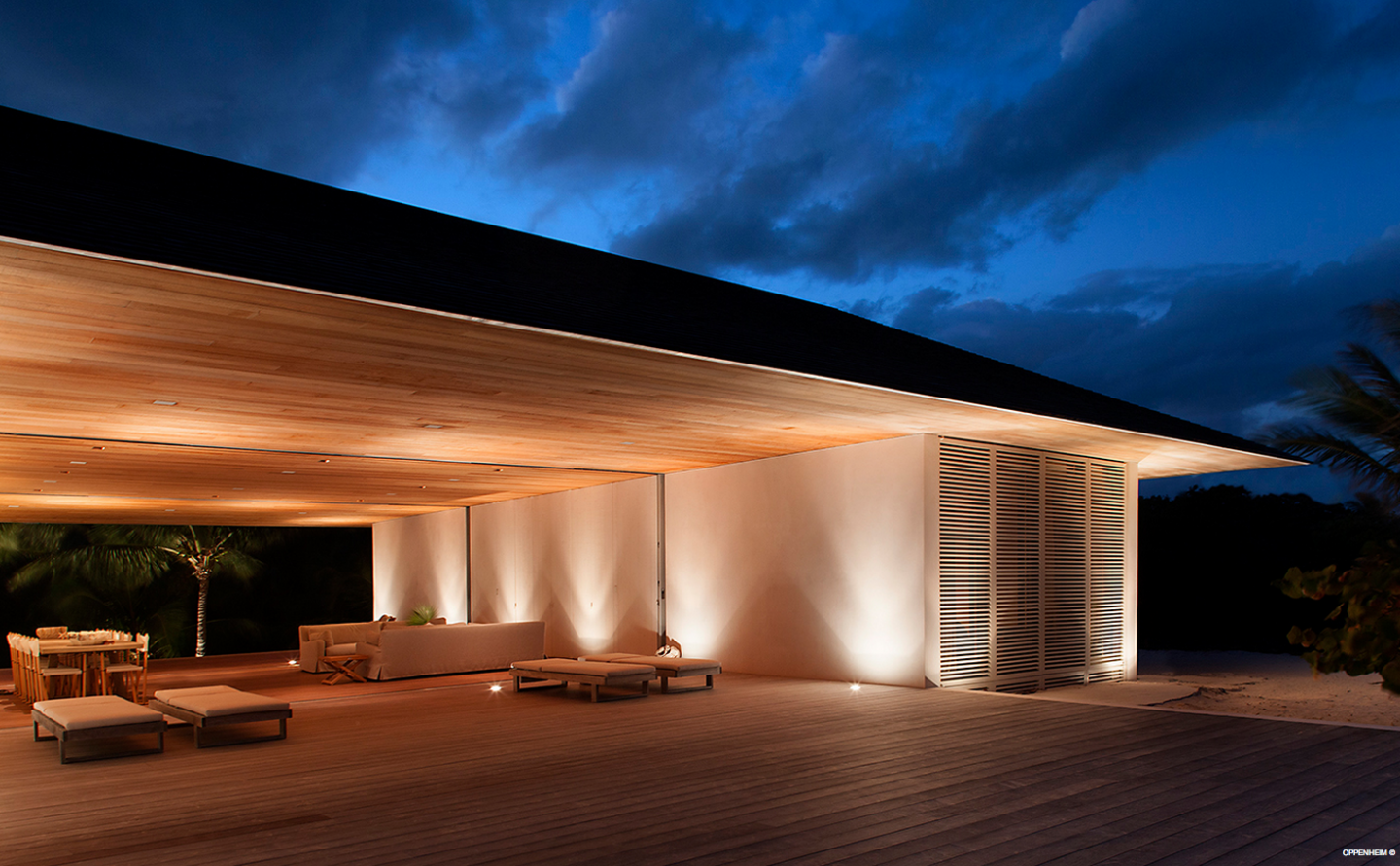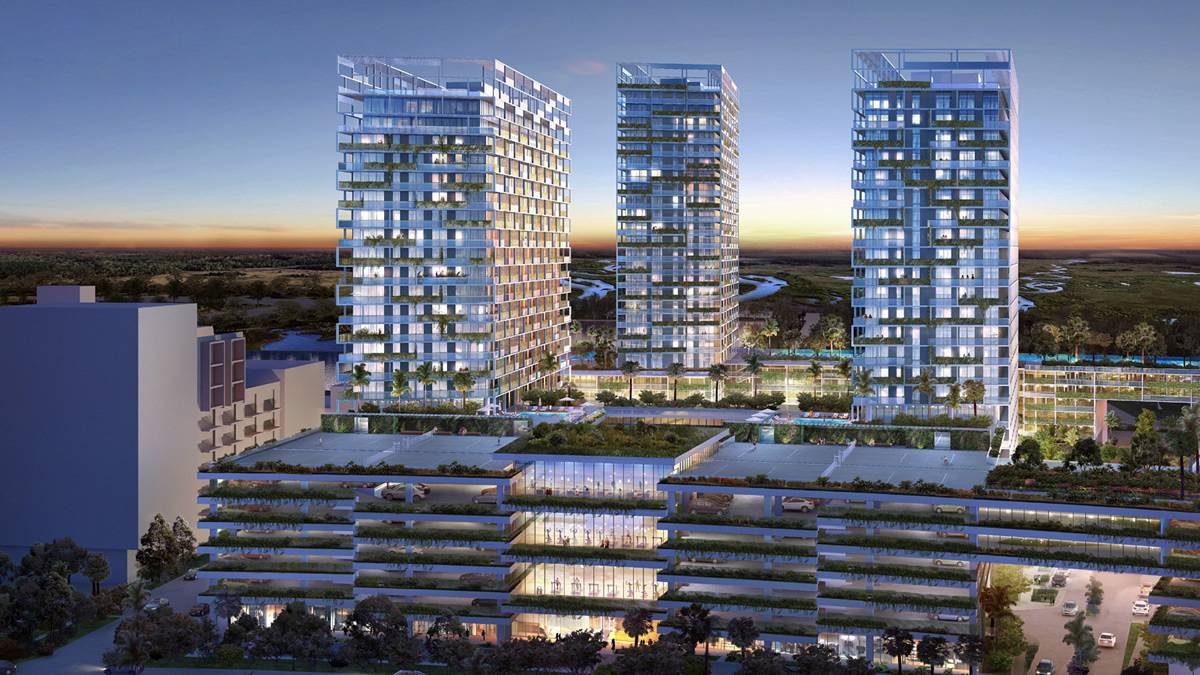Chad Oppenheim fell in love with architecture at the age of seven.
It was the year his parents decided to build a custom-made house, unwittingly igniting the young boy’s passion for home design by allowing him to shadow the architect in charge and partake in the design process—an experience that, much to their surprise, would resonate with their son long after the project’s completion. “While most of my friends were reading Sports Illustrated, I was reading Architectural Digest,” Oppenheim reveals. “By the time I was in eighth grade, I knew I wanted to become an architect.”
The New Jersey native carried his childhood dream all the way to college, eventually graduating with a degree in architecture from Cornell University and landing a post at Arquitectonica, one of the most prominent design firms on the globe. It didn’t take long for him to garner enough courage, means, and desire to launch his own business, however, and in 1999, his eponymous firm—Oppenheim Architecture + Design—was born. As put by its founder, the Miami-based creative company aims to design structures that are “nothing more than what they essentially need to be”—a mission that wholly reflects Oppenheim’s romantic and minimalistic design aesthetic.
“Similar to cooking a balsamic reduction, you boil off the water and other non-critical ingredients throughout the creation and end up with the most hyper explosion of taste and flavor. That is the same process my firm and I follow when designing,” Oppenheim explains. “We strive to produce architecture of elemental means that achieves the maximum effect of the building both [in an urban sense] from the scale of the pedestrian, to the experience [offered] inside of the structure.”
While modern construction designs are often regarded as cold and absent of charm, the acclaimed architect and his team work to produce warm, nurturing environs that support and enhance the lifestyles of their inhabitants. “I like to celebrate the sense of place for each project that I’m designing by using natural resources and elements such as light, air, water, sky, and vegetation, as well as locally sourced materials that root the creation in its place,” Oppenheim says.
Driven by a deep respect for nature, he asserts architecture should be sensitive to natural beauty and ultimately seek to enrich its surroundings in a non-invasive way. “What’s really interesting to me today is our ability to enhance natural environments and work on projects that are meant to [conserve and augment] these incredibly beautiful and delicate ecosystems,” he says. “Through our work, we’re able to recreate and help preserve these places, not destroy them.”
In truth, Oppenheim’s sustainable ways extend far beyond his professional work. He and his wife Ilona have sought to craft a lifestyle inspired by nature, supporting ecological practices such as growing and eating local produce, and providing educational lectures on diverse farming and meal preparation. “My main mission is to enhance life and the way people live,” he says.
It’s therefore no surprise that building healthy, sustainable structures is one of Oppenheim’s key objectives. “It’s something incredibly important to me, and something we demonstrate every day at my firm,” he says. “It’s crucial that our projects showcase our appreciation and love for the natural world, and help preserve local resources.” With that in mind, the designer is constantly working to develop novel ways to live and design using green concepts and materials.
Among his impressive collection of completed eco-conscious works is Net Metropolis, the first certified green project in the Philippines under the nation’s new sustainable building system, BERDE (Building for Ecologically Responsive Design Excellence).
The edifice boasts sun-shading and a full glass curtain wall that features double-glazed low-emissivity glass, which aids in reducing costs and energy usage associated with the air conditioner. “It was such an exciting experience to be a part of, not only because of the forward-thinking design and aesthetic performance of the building, but also because I [helped develop] the new standard that will be applied to all future developments in the country,” Oppenheim enthuses.
His work on La Muna—a private residence sited in Aspen, Colorado—involved the revival of the rustic ski chalet. Using natural resources such as regional wood, local stone, and weathered steel and copper, Oppenheim and his team seamlessly integrated the structure into the surrounding forest. The organic update also entailed the installation of solar collectors that would harness the energy necessary to power and heat the entire home, as well as the addition of large, operable panels of insulated glass that blur the boundaries between indoors and outdoors, further strengthening the relationship between nature and the manmade creation.
Perhaps one of his firm’s most famous works is Ten Museum Park—a condominium skyscraper completed in 2007, whose construction became a catalyst for the design of Museum Park and downtown Miami. “We wanted to create a tower that was slightly different in proportion and scale [in comparison to what] you would usually find in the city,” he says. “The building takes incredible advantage of resources, sky, and water, and celebrates everything Miami has to offer. It’s a very urban, serious structure that’s devoted to pleasure and delight.”
Asked to divulge the project he is most proud of, however, Oppenheim describes House on a Dune—a home he and his team designed on Harbour Island in the Bahamas. “It’s the purest example of what I’m trying to accomplish with my architecture,” he says, revealing that all of the materials used in the residence’s construction—including stucco, impact-resistant glass, Ipe wood, Indian sandstone, onyx, and milk paint—were chosen to help the structure blend into its environment.
“The home is integrated very comfortably into the island setting,” he explains. “It is a pure expression of the architectural styles that have existed on the isle for years… and is historically and contextually sensitive to the island.”
With scores of successful projects around the world already under his belt, the internationally-acclaimed architect shows no signs of slowing down. At this moment, he's juggling a dozen or so developments, including Metropica—a mixed-use structure in Miami that will include 2,500 residential condos, 300 townhouses, and 1.135 million square feet of office and retail space—and Net Park, a 1.55 million-square-foot, mixed-use office and retail complex in Manila comprised of two towers.
Ultimately, what keeps Oppenheim going is quite simple: “I love creating incredible houses and environments for amazing clients,” he says. It's a genuine sentiment that not only fuels him and his team through each long work day, but also promises the continuous production and design of unique, contemporary—and most importantly, sustainable—architectural works for many more years to come.

